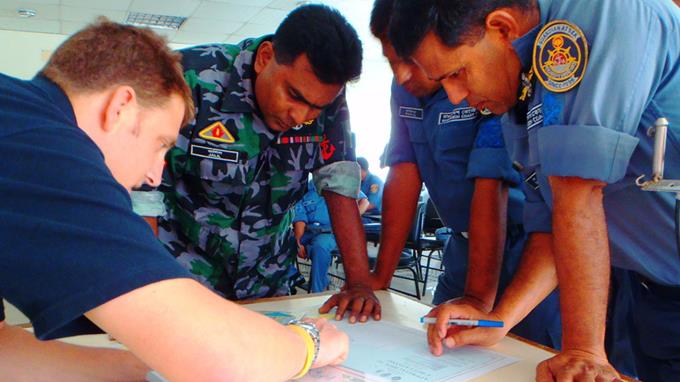Improve adult supervision for young children
Method
To reduce drowning risk among children, it is essential that children interacting with any water source are actively supervised by an adult. Children of all ages swim and play in water, with the types of waterbodies children frequently interact with varying between different settings. In high-income countries, children often use (and drown in) swimming pools and bathtubs. In low-income countries, children are often exposed to natural waterbodies such as rivers and ponds, as well as uncovered places of water storage such as pots and open wells. Supervision of children around any type of water source, regardless of its depth or location, is crucial as it is possible for a child drown in just 5cm of water and within two minutes.
Parent and carer supervision
Often, children are given the responsibility of watching over younger children (commonly siblings) when playing nearby or within water. This type of supervision is inadequate as other children do not have the appropriate cognitive capacity to supervise effectively, becoming easily bored or distracted. Additionally, other children may not have the skills or physical strength to perform rescue should an emergency occur.
Good supervision means that a child is clearly visible at all times and is in close proximity to a supervising adult. This ensures the supervising adult can react instantly and reach the child quickly should they be struggling in the water. It is important that the supervising adult is not under the influence of alcohol or drugs. When there is more than one supervising adult, consider taking turns with watching children. If there is a large amount of children swimming, consider having two or more adults supervising. In a group setting, ensure that someone has been designated as the child supervisor; drowning deaths have occurred when one adult mistakenly thought another was supervising.
Education
Many existing media campaigns promote the dangers of water to children and highlight the importance of adult supervision. The majority of these campaigns have associated resources that are freely available online and may be adaptable to suit different contexts.
Crèches, day-care centres and Anchals
In many cases, adults have competing responsibilities which prevent them from being able to supervise children at all times. This is particularly problematic in settings where numerous water bodies exist within community settings, many of which appear temporarily following heavy rain or flooding. Here, children are surrounded by water on a daily basis. Older children generally attend school during the day, keeping them at lower risk of drowning. Non-school-aged children may need to be enrolled in a crèche, day-care centre or Anchal.
Anchals are child care services developed specifically for low-income settings. They are community-based, local care centres for children aged under five years, generally operating during the busiest part of the day for mothers, between 10am and 2pm. This type of group care provides good adult supervision and can be used teach children about water safety while they are in attendance.
Advantages
- Young children are the most vulnerable age group to drowning.
- Improving supervision practices is a relatively cost-effective drowning reduction intervention, particularly if adults share the responsibility of supervision.
- Many resources promoting adult supervision of children in and around water are freely available.
- Does not require intensive training to implement.
Disadvantages
- A parent or carer will not be able to work or complete household duties while supervising children, potentially leading to a loss of income for the household.
- Day-care centres, crèches and Anchals may be difficult to access or may charge fees for use.
Context
Adult supervision is necessary when children are swimming or playing nearby water. Even if a trained lifeguard is present, it is still the responsibility of the parent/carer to supervise their child.
Examples
Child supervision fact sheet (PDF 170KB)
Child supervision fact sheet (PDF 164KB)
Guidelines to child supervision in public pools
Guidelines to child supervision in/nearby water
More information
Example of a child drowning prevention campaign resource promoting adult supervision (Australia) (PDF 353KB)
Overview of Anchal (Bangladesh) (PDF 113KB)
Cost effectiveness of Anchals for childhood drowning prevention (Bangladesh): Rahman, Fazlur, et al. "Cost-effectiveness of an injury and drowning prevention program in Bangladesh." Pediatrics 130.6 (2012): e1621-e1628.
Step 5
Set objectives and interventions

